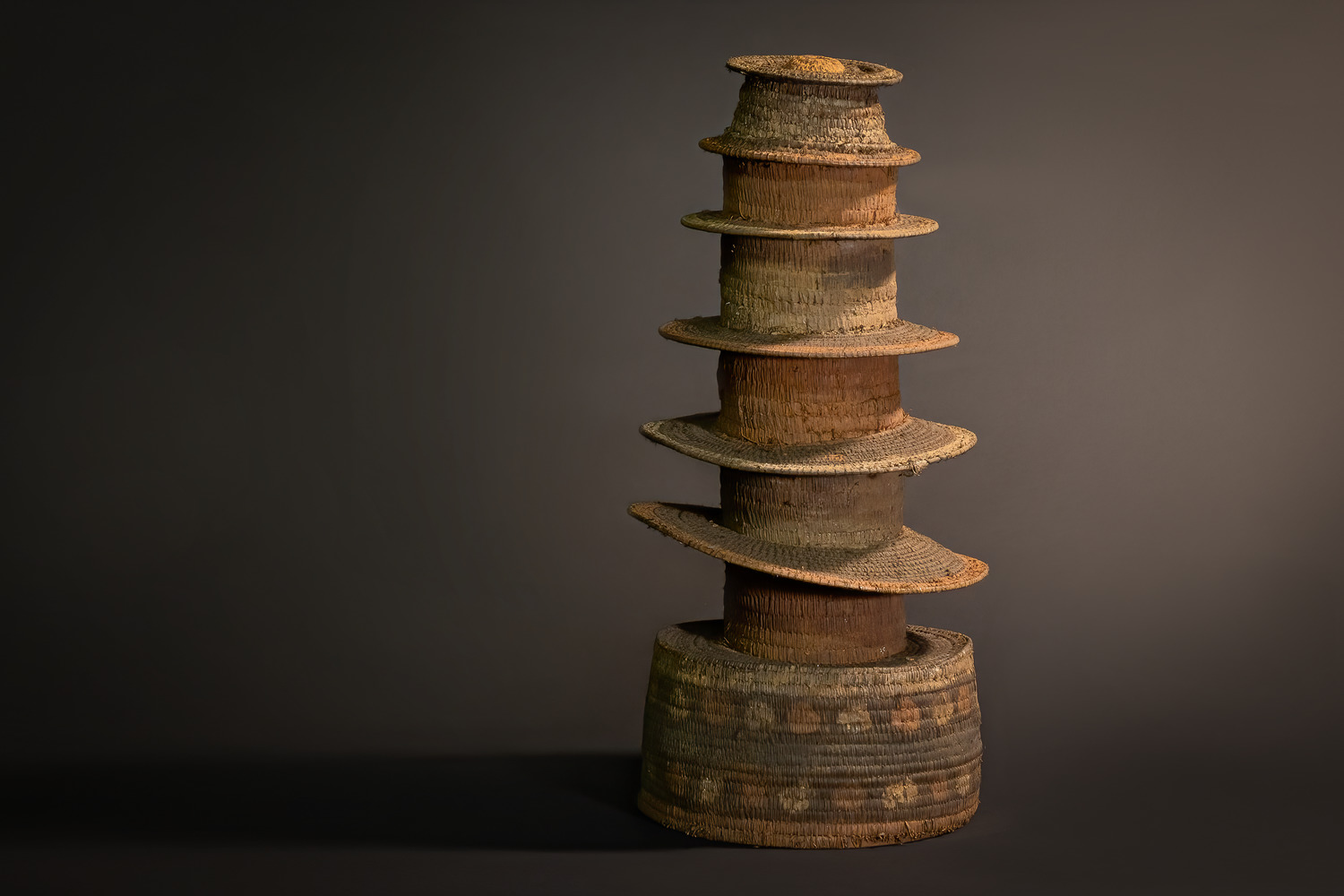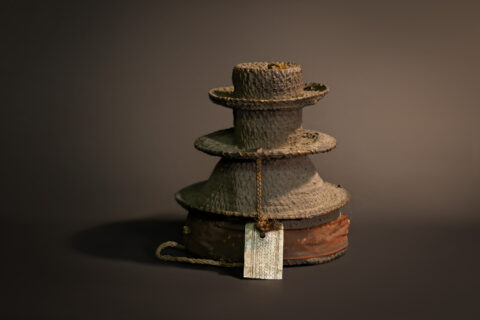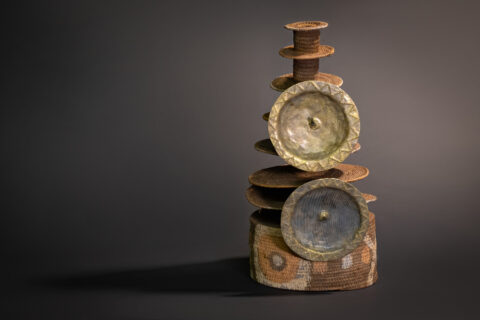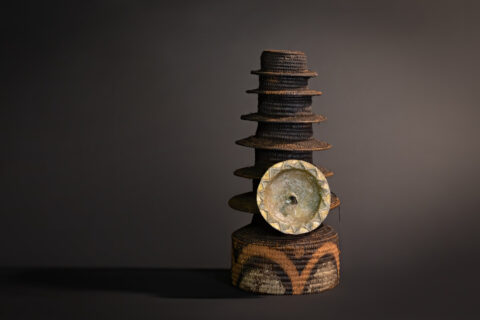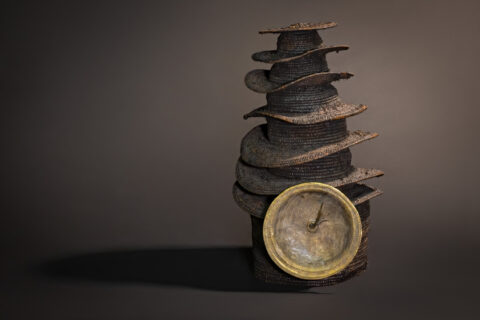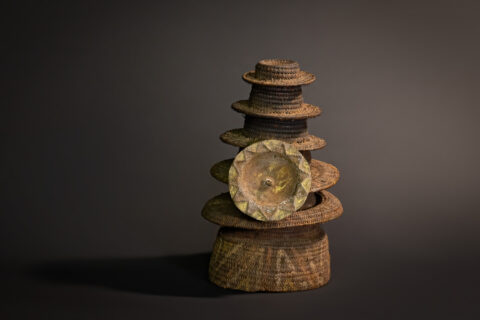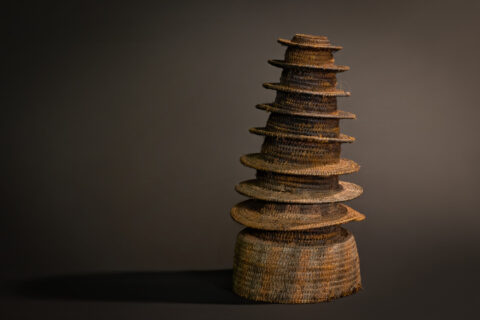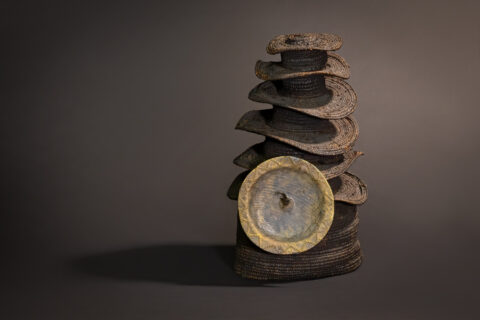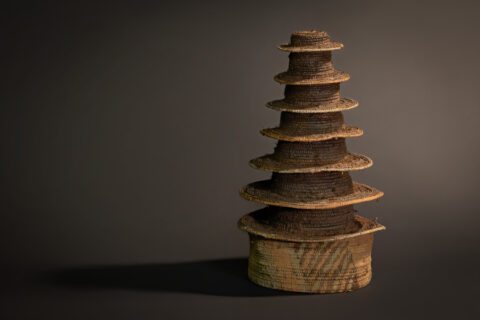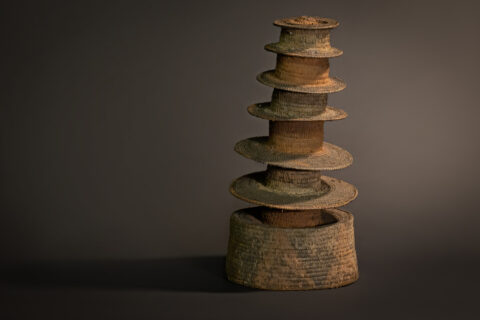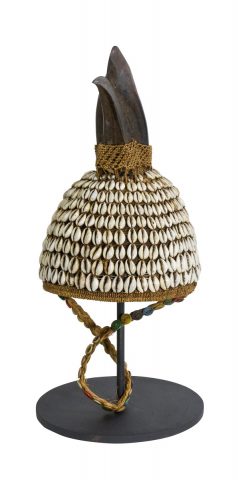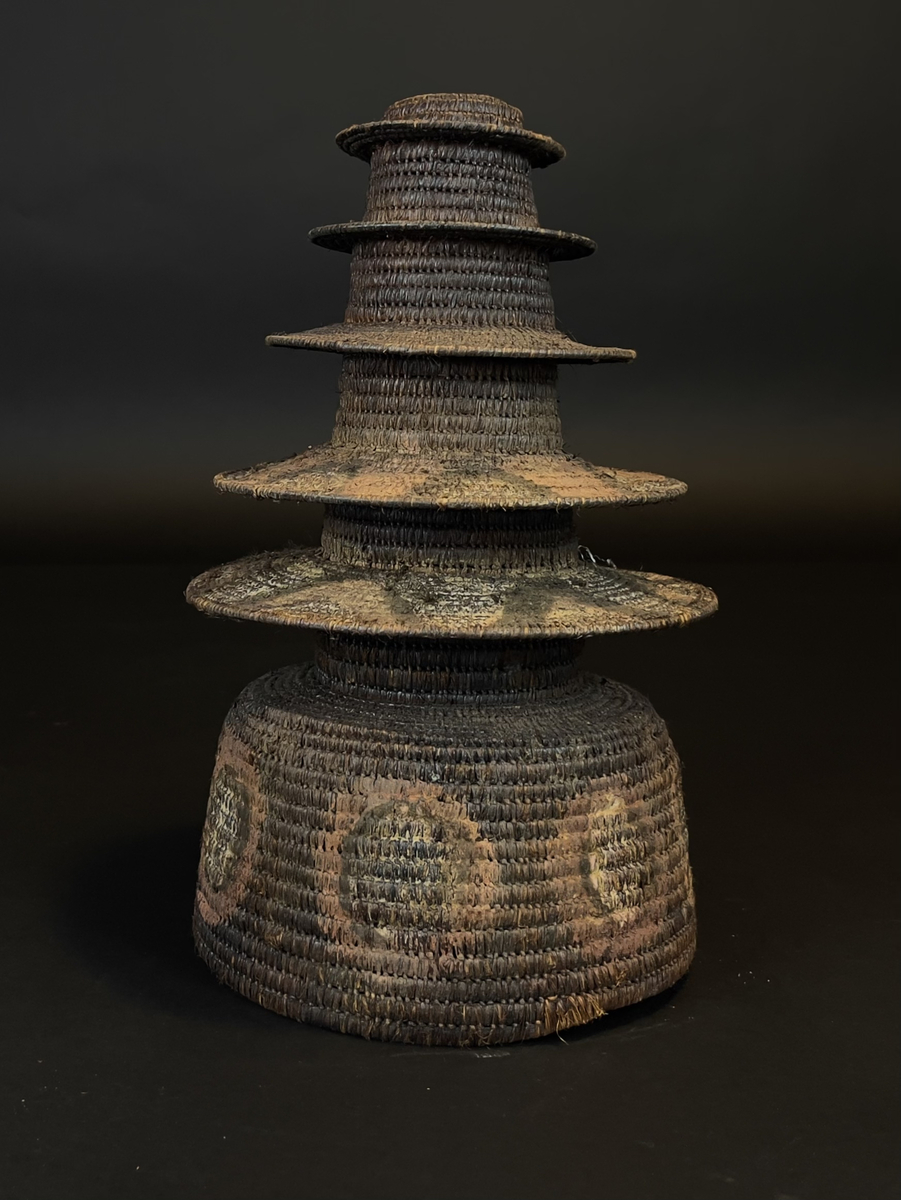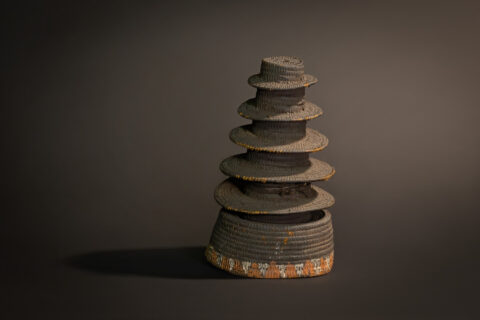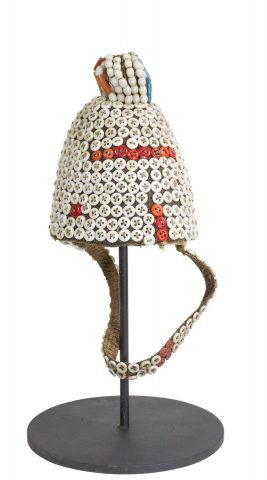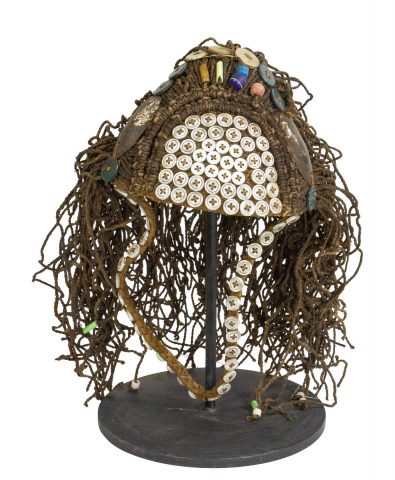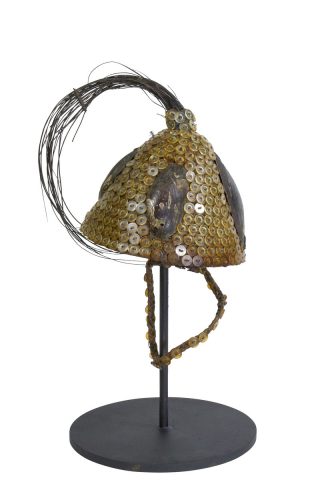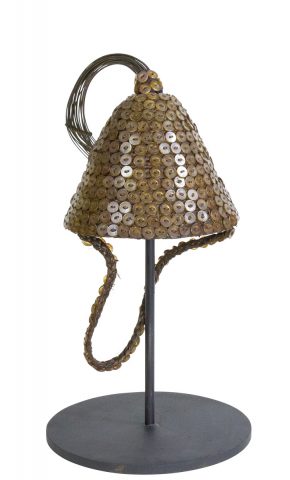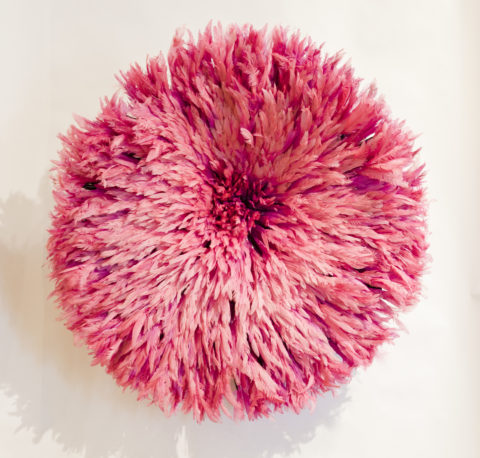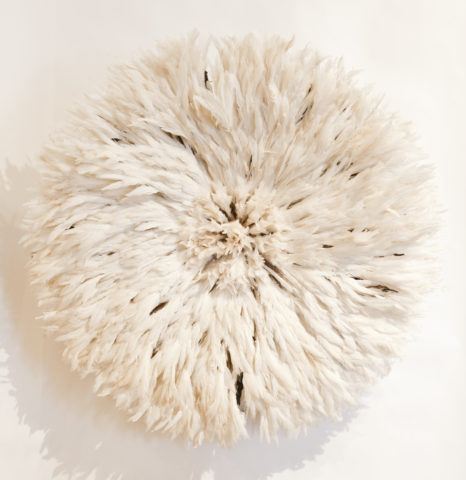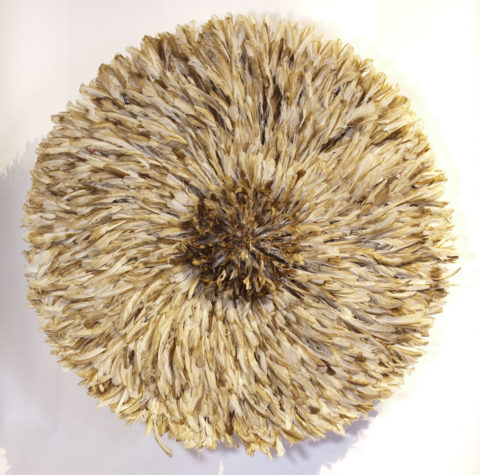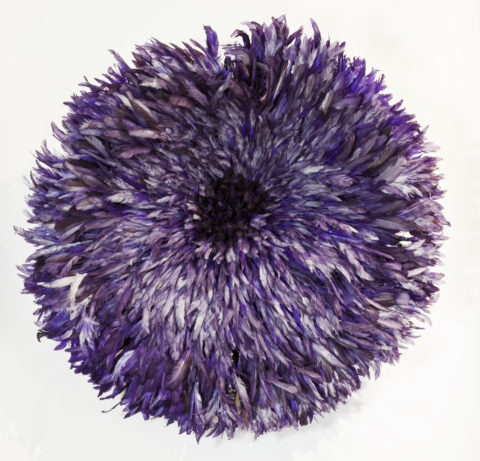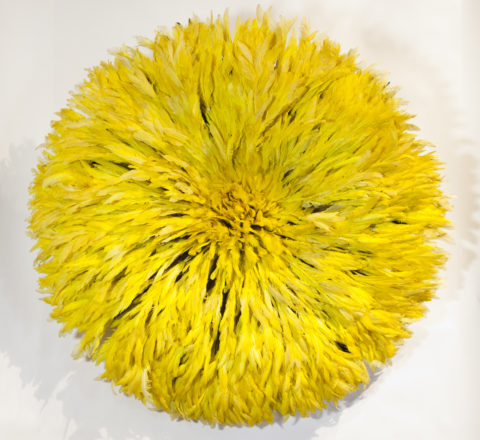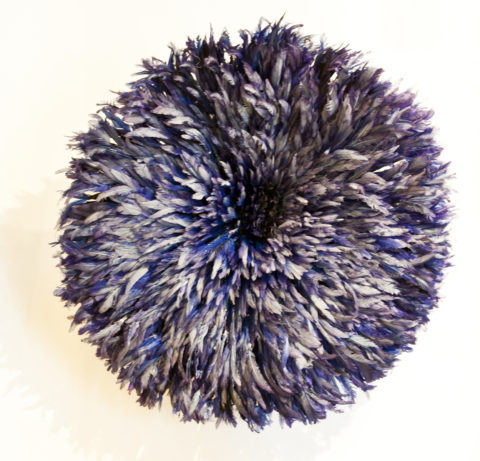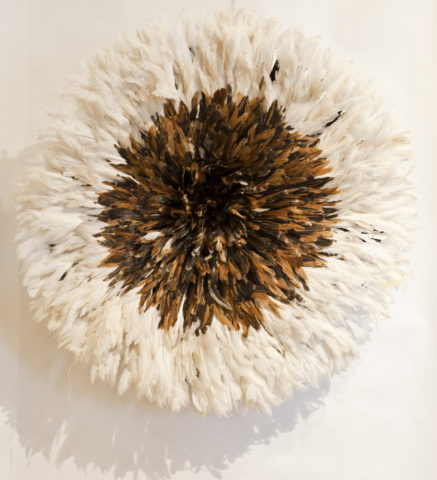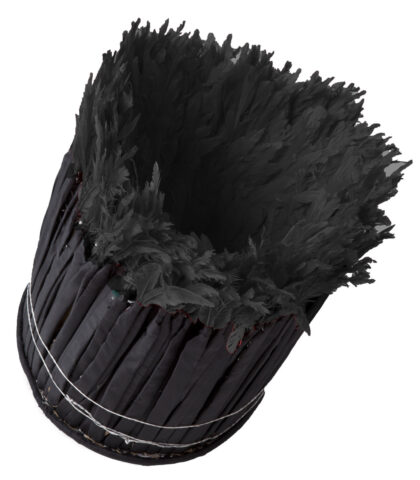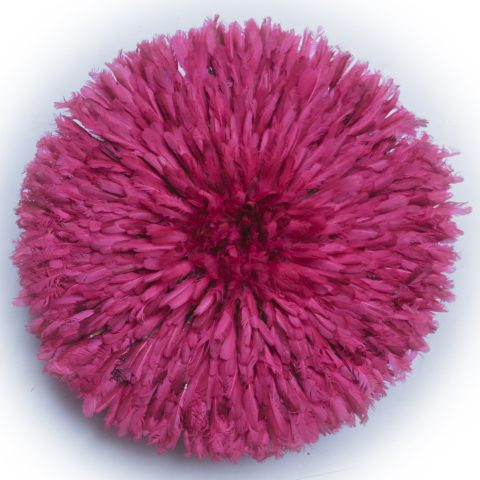Description
Evocative of natural harmony and ancestral balance, this Botolo hat from the Ekonda people rises in seven solemn tiers, each one representing a sacred phase in the chief’s ceremonial journey—from earthly roots to spiritual elevation. Collected in Kinshasa in the early 1970s from a young Ekonda noble of esteemed descent, this piece radiates cultural refinement and rhythmic precision, with each level carefully spaced like the rings of a sacred tree or ripples across still water.
In central African cosmology, the number seven holds deep spiritual significance. For the Ekonda, it resonates with divine order, cyclical life, and the complete arc of human experience—birth, initiation, maturity, leadership, wisdom, death, and ancestral rebirth. This structure, worn exclusively by the nkumu (chief), was not only a sign of temporal power but a visual invocation of spiritual preparedness and legacy stewardship.
The headdress is woven from vegetal fibers collected from the equatorial forests, its cylindrical form wrapped in organic pigmentations of sienna, ochre, and soot. The base is particularly striking—adorned with geometric, almost lunar-like patterns, suggestive of ancestral markings or spiritual wayfinding symbols.
Unadorned by brass, this hat emphasizes sculptural clarity and philosophical intent. As referenced in The Power of Headdresses by Biebuyck and Van den Abbeele (1984), such works are more than objects—they are embodiments of continuity, designed to reflect the chief’s duty as custodian of tradition and transmitter of cultural law.


